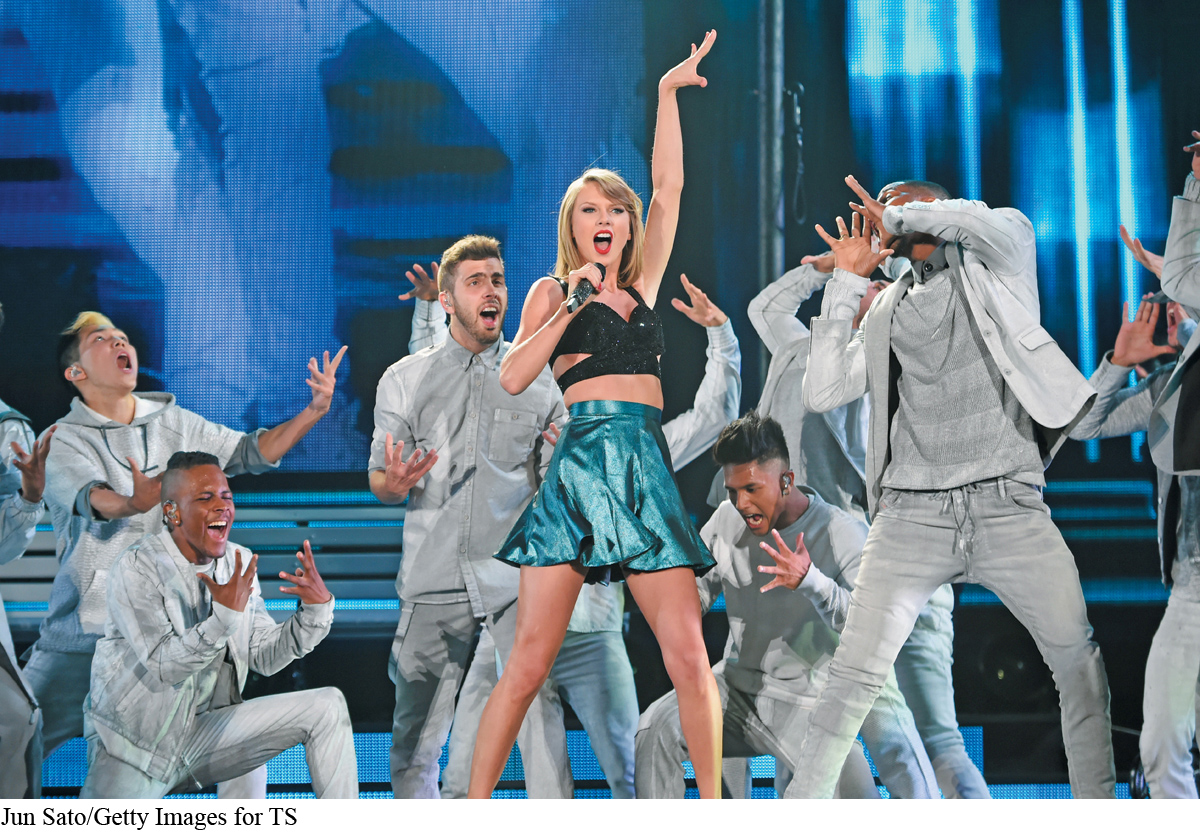Chapter 4 Introduction
112
SOUND AND IMAGES
4
Sound Recording and Popular Music

113
The Development of Sound Recording
U.S. Popular Music and the Formation of Rock
A Changing Industry: Reformations in Popular Music
The Business of Sound Recording
Sound Recording, Free Expression, and Democracy
Taylor Swift has become such a music-
Since her debut release of Taylor Swift in 2006, at the age of sixteen, Swift has become one of the best-
114
Swift’s career has blossomed in the midst of a changing music industry, and she has been a pioneer in terms of maintaining control of her own career. Her first mark of independence was when she signed in 2005 with a new independent music label in Nashville, Big Machine Records. Swift, along with label-
Swift has also developed unique sponsorships for her album sales. For example, Target stores carried special editions of her last three recordings, adding extra promotion to her marketing efforts alongside her celebrity endorsement deals with Subway, Diet Coke, Papa Johns, Walgreens, Keds, Elizabeth Arden, and Cover Girl.
Yet ultimately Swift’s success comes down to the connection with her fans. She is the only artist to sell more than one million copies of an album in its debut week three times in the past fifteen years (with Speak Now in 2010, Red in 2012, and 1989 in 2014). In the first week of 1989’s release, its sales accounted for 22 percent of all album sales in the United States. Swift is such a dominant force in music today that Bloomberg Businessweek published a story with the headline “Taylor Swift Is the Music Industry.”2
With that success comes a certain amount of power, and Swift has wielded it to advocate for fair compensation for artists. In 2014, she removed her music from the streaming site Spotify, becoming the biggest among many artists dissatisfied with the company’s low compensation for music creators. “I’m not willing to contribute my life’s work to an experiment that I don’t feel fairly compensates the writers, producers, artists, and creators of this music,” she told Yahoo! “And I just don’t agree with perpetuating the perception that music has no value and should be free.”3 Swift also wrote a column for the Wall Street Journal reinforcing her views on the industry.4
In 2015, Swift took on an even bigger music company: Apple. In a post to her Tumblr blog titled “To Apple, Love Taylor,” Swift wrote, “I’m sure you are aware that Apple Music will be offering a free three-
Though Swift stood to miss out on plenty of revenue without payment for trial uses, she said she was speaking up for artists who didn’t have the power to do so. “These are not the complaints of a spoiled, petulant child. These are the echoed sentiments of every artist, writer and producer in my social circles who are afraid to speak up publicly because we admire and respect Apple so much.”6 Although just in her mid-
In less than one day, Apple capitulated and agreed to pay artists royalties for the three-
115
THE MEDIUM OF SOUND RECORDING has had an immense impact on our culture. The music that helps shape our identities and comforts us during the transition from childhood to adulthood resonates throughout our lives, and it often stirs debate among parents and teenagers, teachers and students, and politicians and performers, many times leading to social change. Throughout its history, popular music has been banned by parents, school officials, and even governments under the guise of protecting young people from corrupting influences. As far back as the late eighteenth century, authorities in Europe, thinking that it was immoral for young people to dance close together, outlawed waltz music as “savagery.” Between the 1920s and the 1940s, jazz music was criticized for its unbridled and sometimes free-
In this chapter, we will place the impact of popular music in context and:
Investigate the origins of recording’s technological “hardware,” from Thomas Edison’s early phonograph to Emile Berliner’s invention of the flat disk record and the development of audiotape, compact discs, and MP3s
Study radio’s early threat to sound recording and the subsequent alliance between the two media when television arrived in the 1950s
Explore the impact of the Internet on music, including the effects of online piracy and how the industry is adapting to the new era of convergence with new models for distributing and promoting music, from downloads to streaming
Examine the content and culture of the music industry, focusing on the predominant role of rock music and its extraordinary impact on mass media forms and a diverse array of cultures, both American and international
Explore the economic and democratic issues facing the recording industry
As you consider these topics, think about your own relationship with popular music and sound recordings. Who was your first favorite group or singer? How old were you, and what was important to you about this music? How has the way you listen to music changed in the past five years? For more questions to help you think through the role of music in our lives, see “Questioning the Media” in the Chapter Review.